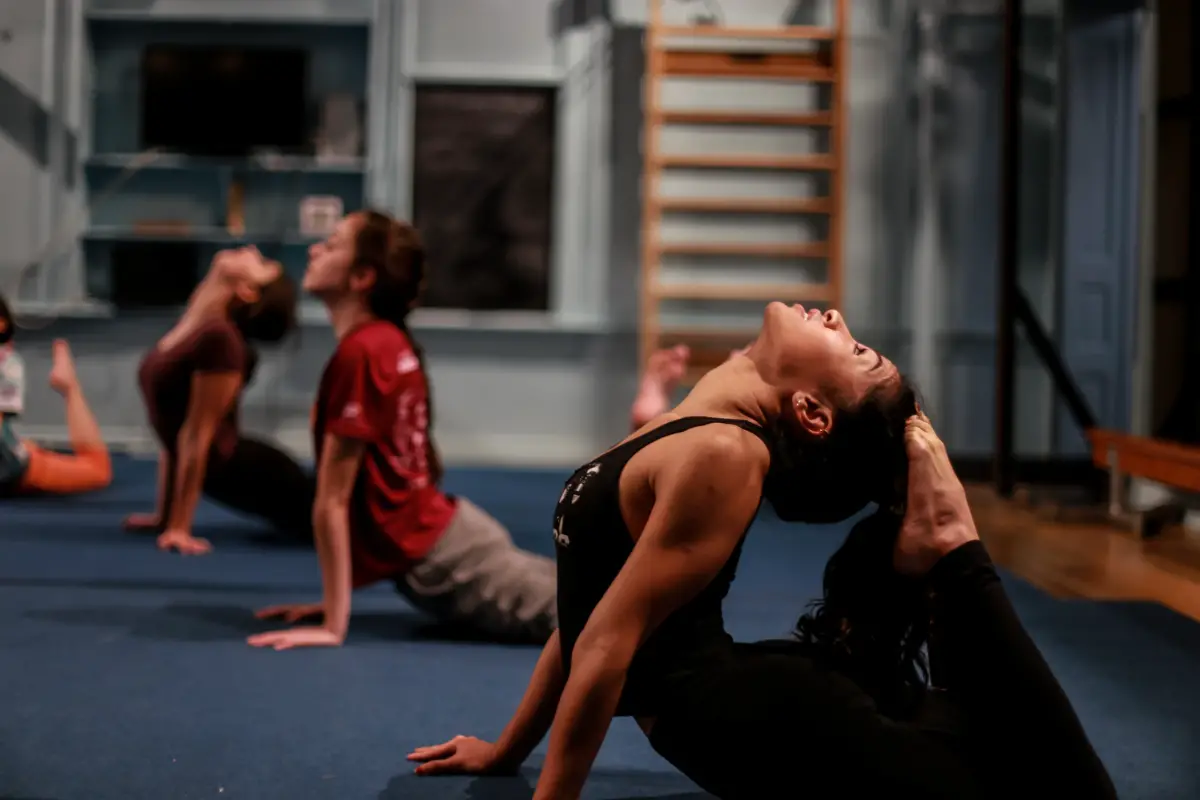Circus fitness is trending, but it’s more than a workout. Once a form of entertainment, circus training is now something that you can both watch and participate in. Several athletic facilities and gyms across popular cities are now offering a variety of circus fitness classes to the public. What do these circus classes entail?
Perhaps the most iconic apparatus involved in a circus training class is the aerial silk, otherwise known as aerial tissu or simply, ribbons. Those familiar with the acrobatic performing group, Cirque du Soleil, will recognize these long strips of fabric suspended from the ceiling, which acrobats use to climb, drop and twirl.
Another common apparatus is the trapeze, most iconic in its flying form, which consists of bars suspended by ropes that acrobats use to swing back and forth, flip and catch each other. In most circus studios, however, you’ll find a static version of the trapeze, designed to accommodate one performer and little swinging, as opposed to two performers and lots of movement.
Some other, and perhaps less recognizable, apparatuses include the lyra, a large metal hoop; aerial straps, thin pieces of cotton with attaching loops for aerialists’ hands; and the hammock, or aerial sling, a giant fabric loop that the performer can lay in, much like a hammock.
The aerial apparatuses are unique in that they challenge performers to lift their own body weight when climbing ribbons or inverting on a trapeze. It might look easy, but it certainly takes a lot of strength to hold yourself up. Not only that, but performers must be extremely flexible in order to maneuver the materials to perform back-bends, splits and other bendy poses. With circus-training centers opening up all over the country, you can try your hand (as well as your strength and flexibility) at learning these body-weight movements and flexible poses.
A typical circus training class starts with a 15 – 30 minute warm-up to loosen your joints, wake up sleepy muscles and elevate your heart rate. Next, it’s time to warm up on the actual apparatus. Usually, instructors will encourage students to warm up their grip by performing small tasks like climbing up the silks, attempting a handful of pull-ups or performing some shoulder shrugs on the firmer apparatus.
Once sufficiently re-acquainted with the apparatus, instructors will often demonstrate a new move that will be the focus of the lesson. Most aerial moves are categorized into the following groups: climbs, which take you up an apparatus (and are not limited to aerial silks); drops, which take you quickly down an apparatus; locked moves, which secure you to an apparatus in some way; and showy moves, which tend to look a lot more difficult than they really are. Students will take turns trying out a new move or cleaning up old moves under the watchful eye of the instructor.
While there are no dumbbells and no bench presses, you’ll be amazed at how quickly these classes will build your strength. During my first circus training class, I could barely hold myself up on the silks, and certainly got no more than two climbs up. These days, I can climb up to the ceiling with little effort, which means I can also play around with how I climb, whether it’s fast, slow, upside-down or even with my toes.
In addition to instruction on skills involving the apparatus, many circus-training classes also focus on ground skills. Juggling, stilt-walking, hand-standing and even clowning are considered featured parts of a circus curriculum. While at first glance, juggling may not require the same strength and flexibility that aerial silks do, ground skills help to hone coordination, establish habits and instill an appreciation for the art of play.
At its core, that’s what the circus training is about: practice and technique. Sure strength and flexibility are great too, but most importantly, the circus is about the art of play, of becoming familiar with the limits of your own body — your own practice and your own strength — in order to enjoy the motion.
As a result, many circus training classes integrate play into their instruction. For example, I’ve been in classes where students have to draw personalities or situations from a hat, and then climb a silk while emulating that persona. Other teachers will encourage students who have just learned a new sequence to puzzle out the move backwards or on the other leg. Another popular game challenges students to connect two different moves without returning to the ground, or to make a shape with multiple people.
Unlike other fitness techniques that emphasize repetition, circus encourages innovation and creation. Your practice can be ritualized, but it should also encourage curiosity and change. In this way, circus training resembles more of an art form more than a fitness craze, though there is no doubt that it requires a lot of strength.
It’s easy to see a Cirque du Soleil act and get intimidated — these performers have been training and practicing professionally for years, so their skills are obviously impressive. But the truth is that circus is a widely accessible activity, even for the uninitiated.
The increased interest in circus classes has pushed many cities to open more facilities that offer these types of classes. Many locations even offer the choice of multiple studios. You can try out a class or an apparatus with trial packs, no long-term commitments necessary. Because circus is such a widespread activity, you can visit studios while traveling to other cities, in order to experience new equipment and new teaching styles.
Many are hesitant to give circus a try because they think they lack the strength. But the strength comes from continued practice – it’s not expected in the beginning. While many of the advanced moves would certainly take years to master, playing on the unique apparatus is available to anyone!
But circus training is certainly not the only fitness trend to see a recent rise in popularity. CrossFit and Barre workouts are widely attended, while yoga and Zumba classes continue to be fan favorites. So what makes circus fitness worthwhile, and how is it different from other fitness trends?
In addition to providing an outlet for gaining strength, increasing flexibility, engaging in play and honing creativity, the circus community makes the art wholly worthwhile. The community of circus students and teachers is always supportive, working hard to remain inclusive and welcoming to all.
Unlike other fitness classes, there is no blind commitment to get the most reps possible, and no loud shouting about getting your summer bod. Instead, the circus community has always been focused on respecting you and others’ minds and bodies, allowing you to listen to your body’s messages and identify its limits.
Many partner classes also incorporate consent-based teaching, which is crucial for all partner acrobatics and aerial work. Such pedagogy creates a community that is unlike any other in the fitness world.
So, come join the circus for some weird and playful fitness, but stay for the family.
















